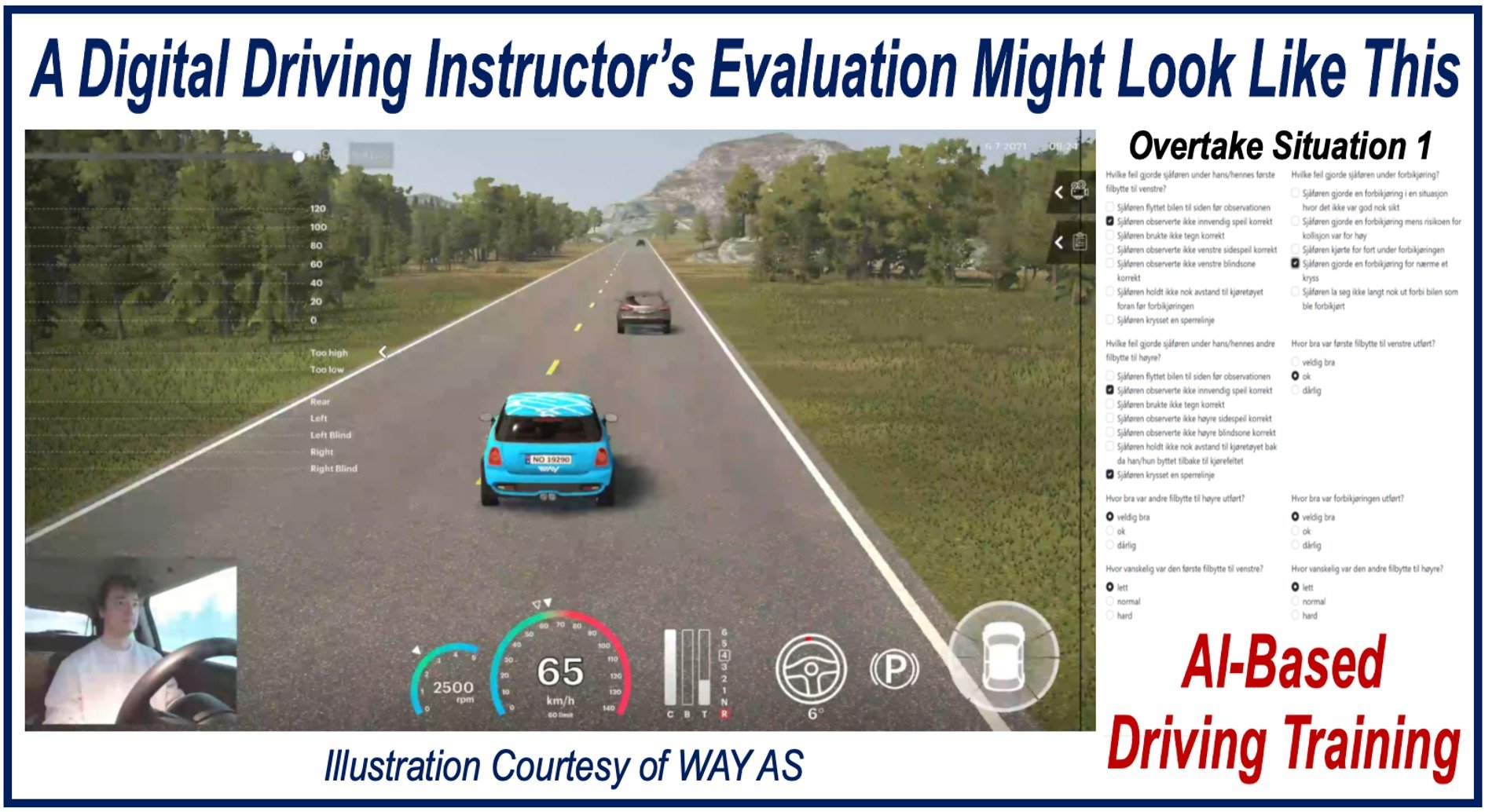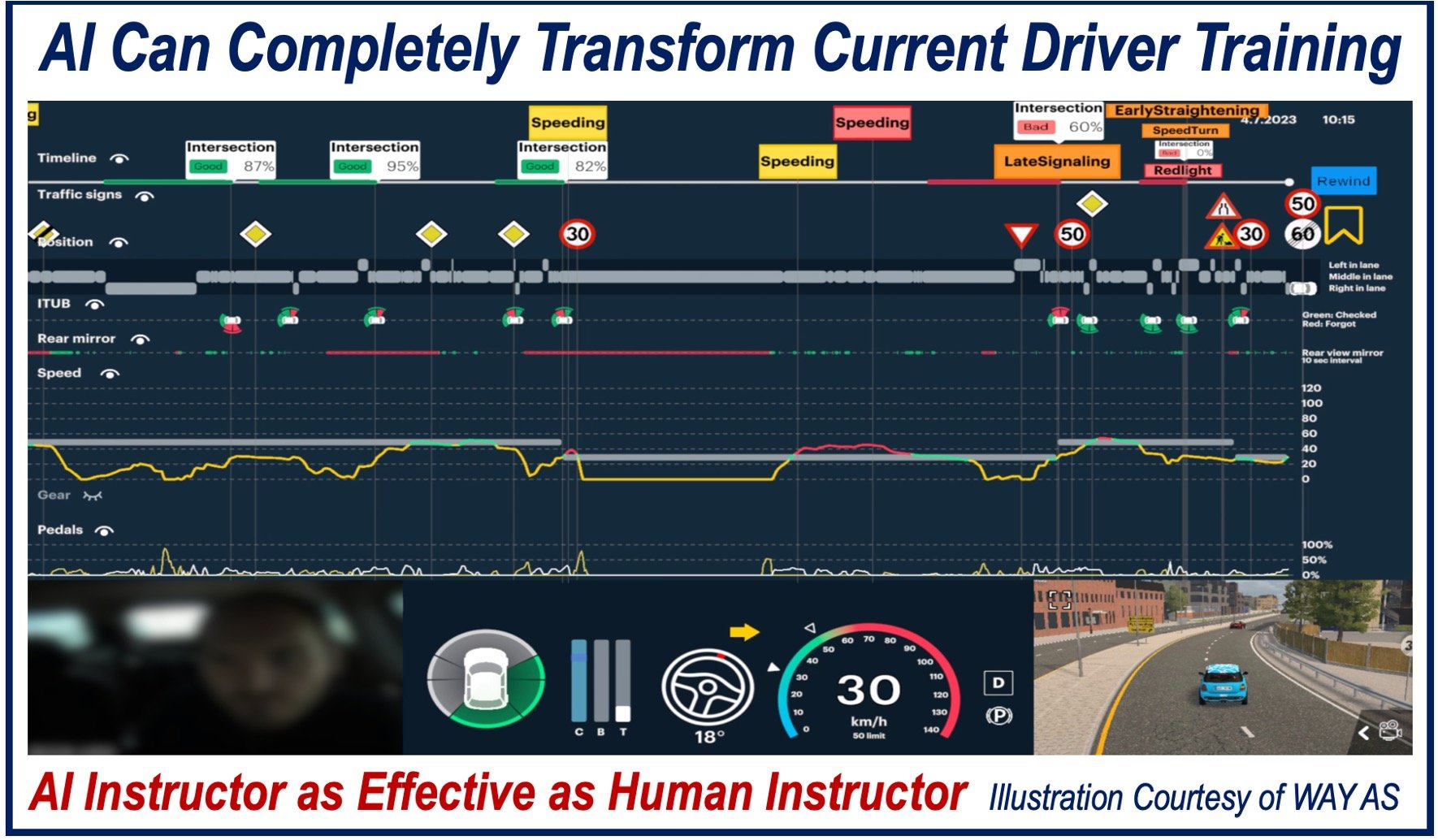AI-Driven Systems Offer Precise, Objective Training and May Revolutionize Driver Instruction
With nearly 1.2 million lives lost in road traffic accidents globally each year, enhancing driver education has become a critical task.
AI-based driving instructors are emerging as a promising solution. Recent research indicates that virtual driving instructors can provide real-time, objective feedback, potentially matching the effectiveness of human instructors.
A collaboration between NTNU, Virtur, and WAY AS in Norway has developed an AI-based driving system that could transform driver education, bringing both precision and affordability to the process. The researchers wrote about their study and findings in the peer-reviewed journal Expert Systems with Applications (citation below).
AI-Based Driving Instructors are Impartial
A significant benefit of AI instructors is their ability to offer unbiased, real-time evaluations of learner drivers. Unlike human instructors, AI systems are free from personal biases, ensuring that feedback is based solely on performance.
This neutrality helps reduce the chance of skewed evaluations that could result from personal dynamics between the instructor and learner.
According to NTNU Associate Professor Odd Erik Gundersen, the AI driving instructor is as effective as human instructors in evaluating driver performance.
This level of precision is achieved through a rule-based system that assesses various traffic scenarios, such as overtaking, roundabouts (traffic circles), and navigating complex junctions.
Saving Lives Through Improved Training
Globally, road accidents are the leading cause of death for young people aged 5 to 29, with men being three times more likely to be involved in fatal accidents than women.
Small improvements in driver training could save countless lives, aligning with the UN’s goal to halve traffic deaths by 2030. In Europe, the ambition is even more optimistic, aiming for zero traffic fatalities by 2050.
In Norway, where traffic fatalities have recently increased, AI-based driving instructors are seen as a potential game-changer.
Simulators can offer learners an opportunity to practice in a variety of realistic situations, even those that are too dangerous to recreate in real life, such as sudden encounters with wildlife on the road.

Tailored Training for Every Learner
The AI driving instructor has another advantage: the ability to tailor lessons to individual drivers.
By identifying the specific areas where a learner needs improvement, such as handling roundabouts or managing stressful traffic situations, the system can focus on these aspects, optimizing the learning experience.
Learners can practice the same scenario multiple times in a short period — for example, they can attempt 30 roundabouts in just 30 minutes.
This intensive, focused training is difficult to achieve in traditional, real-world driving lessons.
AI-Based Driving Instructors are Cost-Effective and Scalable
One of the most significant benefits of this technology is its potential to reduce the cost of driving lessons.
Current lessons require a human instructor to be present, which can be both time-consuming and expensive.
With AI-based instructors, a larger number of learners can be trained simultaneously, reducing the overall cost of instruction.
The system uses a rules-based architecture, which allows it to make objective assessments of driving performance. Unlike machine learning models, which require large amounts of data to train, this system operates on predetermined rules.
These rules are easily explainable, enabling the AI instructor to not only evaluate a learner’s performance but also justify its feedback and suggest improvements.

Challenges and Future Directions
Despite its advantages, the development of AI driving instructors faces some challenges.
Creating and managing the comprehensive set of rules required for the system is both time-consuming and complex.
Additionally, regulations in some countries, such as Norway, currently prohibit driver training in simulators, limiting the immediate adoption of these systems.
However, the introduction of mixed reality (MR) technology offers new possibilities. MR combines virtual reality (VR) and augmented reality (AR) to create immersive training experiences.
By using advanced eye-tracking technology and blending virtual and real-world environments, AI-based systems could offer even more personalized and effective training in the future.
Final Thoughts
AI driving instructors represent a major leap forward in driver education. Their ability to provide unbiased, real-time feedback tailored to each learner’s needs can improve driver training, potentially saving lives on the road.
While there are still regulatory hurdles to overcome, the future of AI-driven driver training looks promising.
With advancements in virtual and mixed reality technology, these systems could soon become a staple in driving schools worldwide, offering an affordable and efficient alternative to traditional driving lessons.
Citation
Rehm, J., Reshodko, I., & Gundersen, O. E. (2024). A virtual driving instructor that assesses driving performance on par with human experts. Expert Systems with Applications, 248, 123355. https://doi.org/10.1016/j.eswa.2024.123355
